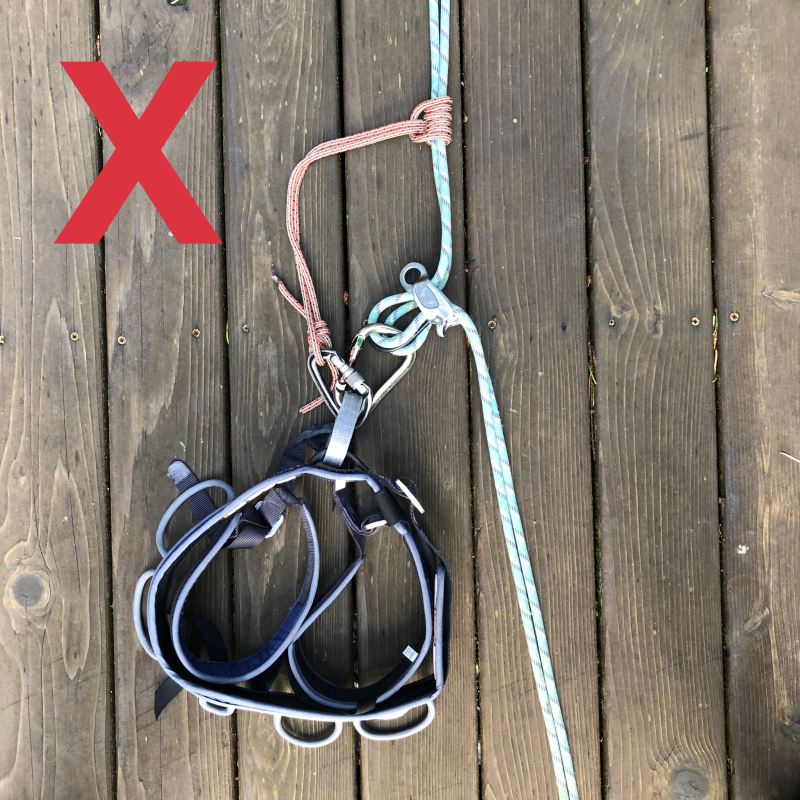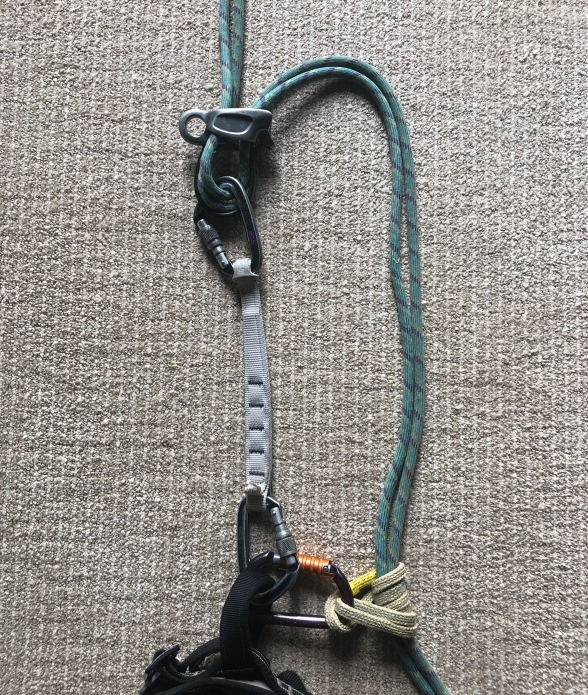Rappel backup: avoid a prusik above your device
Adding a friction hitch (such as a prusik or autoblock) as a rappel backup becoming more widely accepted. More conservative climbers might use one pretty much always. Other people prefer a back up when:
beginners are rapping
your hands are cold
the rope is wet
rapping on a single strand or a skinny rope
if you need to swing or pendulum to reach the next rap station
rapping with a heavy pack
when you can see the rope is clustered / hung up and you need to free it
if you’re not sure where the next rap station is
Or any combination of these factors. In other words, pretty much any situation other than a rap in perfect conditions.
So, what’s the best way to rig a rappel backup? With an autoblock tied below your device.
The older school method was to add a prusik to the rope ABOVE their rappel device. So the theory goes, if they lose control of the brake hand on rappel, the prusik will catch them. This sounds reasonable, but this method has a few problems.
1 - If the prusik knot is above your rappel device, for it to lock up, it needs to hold all of your weight. With the knot below your device, it only needs to hold the same amount as your brake hand, which is minimal.
2 - Once it’s weighted, the rappeler must remove their entire body weight from the knot in order for it to be released, which if you don't know a few Crafty Rope Tricks, is actually kind of hard to do. (Bonus tip - One fast and easy way to remove your weight from loaded prusik is to pull one foot up underneath your butt, wrap the rope a few times around your foot, and stand up.) With the prusik below the device, you can very easily weight and unweight the prusik as needed.
3 - For the prusik to slide freely, the non-brake hand must be on it or perhaps above it during the rappel to slide it along. To catch on the rope and stop the climber, the non-brake hand needs to be off the prusik. Problem: In the event of a loss of control, our instinct is to grab tighter on the prusik or the rope above it, not let go of it. This grabbing keeps the prusik loose, prevents it from cinching it down on the rope, and may cause the climber to accelerate down the rope and . . . SMACK!
4 - Another old school method was to attach the back up hitch to your leg loop. This is definitely not recommended, because your weight will end up hanging from the leg loop, which could flip you upside down, yikes!
(The one time when it might be a good idea to attach a prusik hitch ABOVE your rappel device before you start your rappel is if you know you’re going to be passing a knot. However, this is an very rare situation for most climbers, and usually can be avoided entirely if you know a crafty rope trick like this one.)
The image below is how you probably do NOT want to rig your rappel.
A better rappel backup method is to use an autoblock knot with an extended rappel. Here, the backup knot is tied below the brake hand rather than above it. If the brake hand comes off, the autoblock immediately grabs the rope and stops the climber. The auto block and extended rappel are covered in depth at this tip.
Here’s a photo from that post to show you the difference. Note the rappel device is extended away from the harness with a locking quickdraw (one of various ways to do this), and the autoblock knot is below the rappel device.


